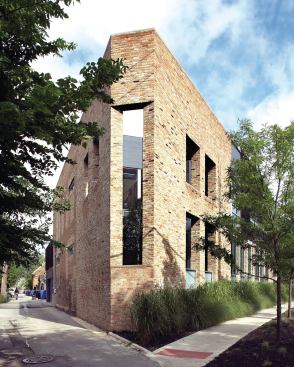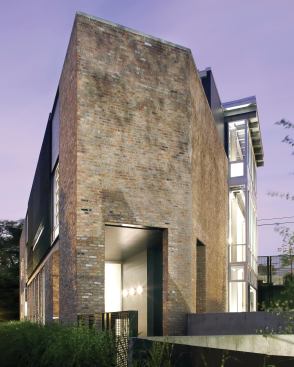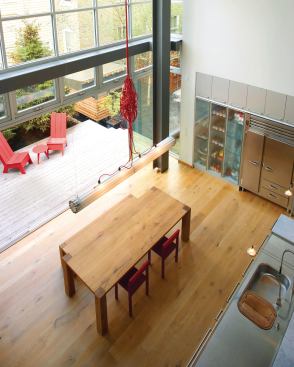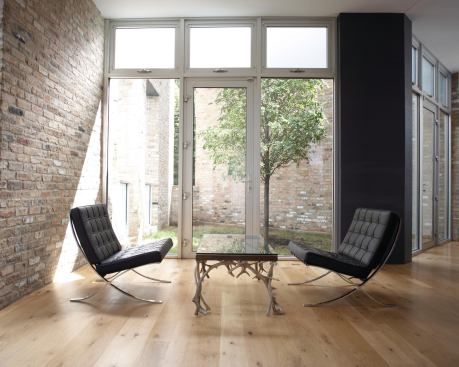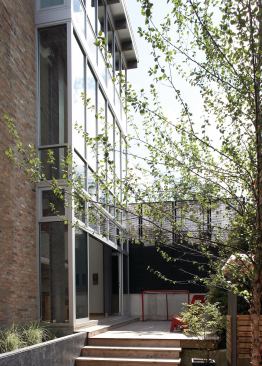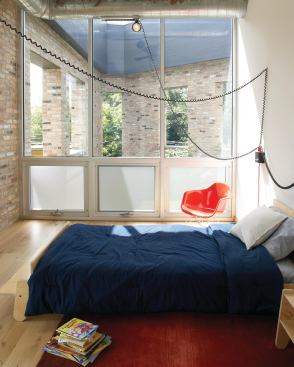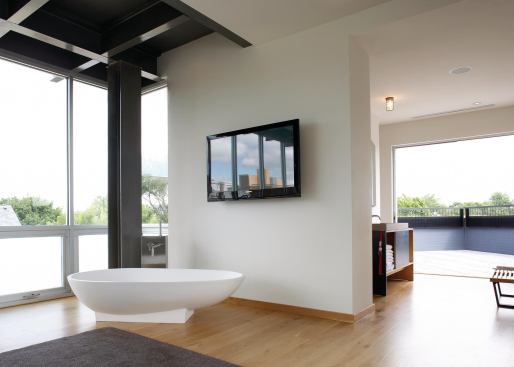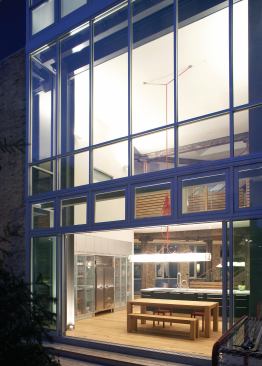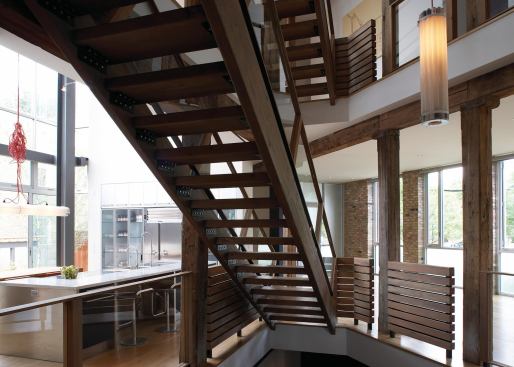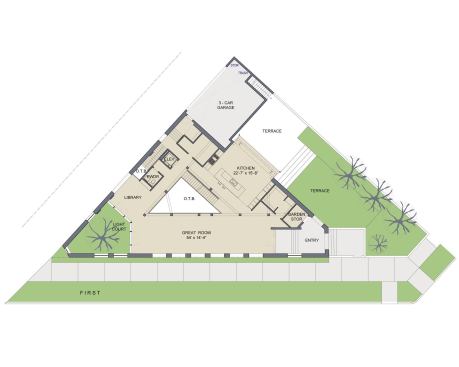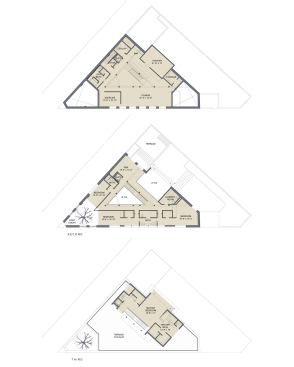Marty Peters
Love Triangle A flatiron-shaped warehouse in a beloved Chicago n…
The 1920s warehouse, a two-story flatiron building northwest of The Loop in Chicago’s Bucktown neighborhood, was handsome, to be sure. Its rough-and-ready good looks didn’t demand the kind of pampering that some preservation projects do, says David Miller, principal of Seattle-based architectural firm The Miller|Hull Partnership. “You don’t have to be quite so careful with a building like this,” he says of the mercantile structure’s cavernous spaces, timber framing, and brick cladding. A former storage facility for an importer of Polish foods, the place had been crammed with pallet after pallet of canned vegetables and jars of preserves when Miller made his first site visit. This made it hard to see the interior, but he knew that the potential was there.
The clients, a couple with two young sons, lived just a few blocks away. They loved their city neighborhood and wanted to stay, but they also needed space for their two growing boys to run around and have friends over. When they got word that the old warehouse on a nearby corner—a building they had noticed for years—was for sale, they pounced and hired a design team. Along with architect Mark Peters of Studio Dwell and Ranquist Development, both based in Chicago, Miller adopted a kit-of-parts strategy to turn the huge, 90-year-old industrial space into a single-family home.
Easily found items such as metal-clad doors and industrial sinks for the kitchen contrast with the building’s brick exterior, playing modern against historic. Large, off-the-shelf industrial windows let light into the space, open up the interiors, and help the building relate better to the out-of-doors. Using ready-made fittings saved on budget, too.
To help the place feel more like a home for a family, the architects didn’t devote all of its 8,600 square feet to indoor living and rooms with walls. They carved out a sizable front atrium, complete with turf and a tree, and they cut a long, vertical slit in the building’s chamfered apex to let light in and emphasize the building’s triangular shape. Industrial-sized panes of glass and sliding doors comprise a wall of windows that opens out onto a deck and a garden, making outdoor living possible in this ultra-urban environment, while providing plenty of safe space for rambunctious boys to run free and play with their friends.
Unlike many homes, inside this one, skateboarding and floor hockey are a-okay: For kids, that’s the stuff of dreams. For parents, on the other hand, indoor sports could be the very definition of mayhem—but in this Chicago house, it also makes for peace of mind.
Learn more about markets featured in this article: Chicago, IL.
